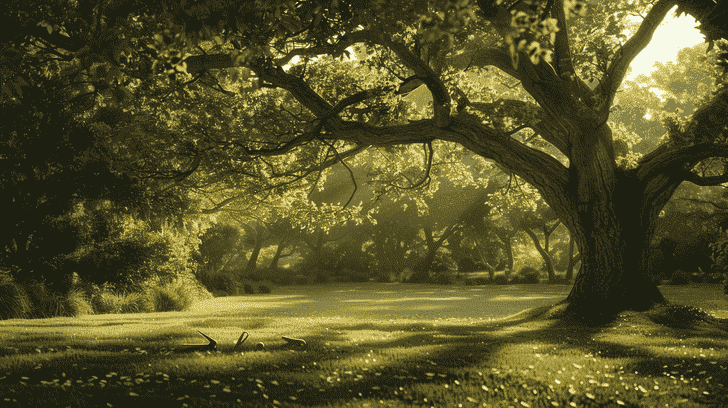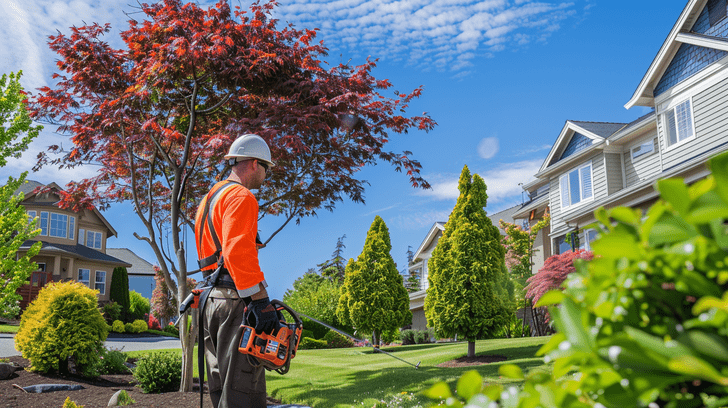How To Grow and Care for Magnolia Trees
To successfully grow and care for magnolia trees, begin by selecting a variety suitable for your climate and soil type.
Plant your magnolia tree in well-draining soil with a slightly acidic pH, and provide full sun to partial shade.
Water regularly, especially during the first year after planting, but avoid overwatering which can lead to root rot.
Fertilize annually with a balanced fertilizer, and prune in late winter or early spring to maintain shape and promote healthy growth.
Mulch around the base to retain moisture and suppress weeds.
Protect your magnolia from extreme temperatures, winds, and pests like scales and aphids.
With proper care, magnolia trees can thrive for decades, providing stunning flowers and a majestic presence to your landscape.”
What are Magnolia Trees?
Magnolia trees are stunning, flowering evergreens or deciduous trees that belong to the Magnoliaceae family, comprising over 200 species that have been enchanting gardeners and nature enthusiasts for centuries.
As you explore the world of magnolia species, you’ll discover a diverse range of woody plants that thrive in various climates and soil types.
These magnificent trees can grow up to 80 feet tall, with some magnolia species producing showy flowers that can reach 12 inches in diameter.
With their attractive foliage and striking blooms, it’s no wonder magnolia trees have become a popular choice for landscaping and gardening.
Whether you’re a seasoned horticulturist or a nature lover, you’ll appreciate the unique charm and beauty of magnolia trees.
How To Grow a Magnolia Tree?
As you start growing your magnolia tree, you’ll want to be aware of potential growth problems that can hinder its progress.
You’ll need to know how to address issues like slow growth, yellowing leaves, or pest infestations to guarantee your tree reaches its full potential.
Magnolia Tree Growth Problems
You’ll likely encounter some common growth problems when trying to grow a magnolia tree, such as slow growth, yellowing leaves, or pests and diseases.
These issues can be frustrating, but with proper magnolia tree maintenance, you can overcome them.
Regular magnolia pruning can help prevent disease and pest infestations, while also promoting healthy growth.
| Problem | Solution |
| Slow growth | Guarantee proper soil conditions, watering, and sunlight. |
| Yellowing leaves | Check for nutrient deficiencies and adjust fertilization accordingly. |
| Pests and diseases | Inspect your tree regularly and treat promptly if necessary. |
How To Help Magnolia Tree Grow
By following a few simple guidelines, you can create an ideal environment for your magnolia tree to thrive. When it comes to magnolia tree planting, choose a location with full sun to partial shade and well-draining soil.
Magnolia cultivation requires regular watering, especially during the first year after planting. Water your tree deeply once or twice a week, depending on weather conditions. Magnolia watering should be consistent, but avoid overwatering, which can lead to root rot.
Fertilize your tree annually with a balanced fertilizer to promote healthy growth. Prune your magnolia tree regularly to maintain its shape and encourage blooming.
With proper care, your magnolia tree will flourish and become a stunning addition to your landscape.
Magnolia tree care in winter
Winterizing your magnolia tree is essential to protect it from harsh weather conditions and maintain its continued health and beauty.
During winter, your magnolia tree care routine should focus on providing protection from cold temperatures, wind, and dry air.
Here are some tips to keep in mind:
- Mulch around the base to retain moisture and regulate soil temperature.
- Water sparingly, as the tree is dormant and requires less moisture.
- Protect the trunk from wind and frost damage using a tree guard or burlap.
- Avoid pruning, as this can cause new growth that may be damaged by frost.
Fertilizer for Magnolia Trees
When fertilizing your magnolia tree, selecting a balanced, slow-release formula that provides nutrients without promoting excessive growth is essential.
You want to support healthy development without encouraging weak growth that can make your tree more susceptible to disease and pests.
A slow-release fertilizer allows your magnolia tree to absorb nutrients as needed, reducing the risk of over-fertilization. For plant maintenance, apply the fertilizer according to the manufacturer’s instructions, usually in early spring and again in mid-summer.
Avoid over-fertilizing, as this can damage your magnolia tree’s roots and reduce its ability to absorb water and nutrients. By choosing the right fertilizer and following the instructions, you’ll be providing your magnolia tree with the nutrients it needs to thrive.
Magnolia Tree Leaf Loss
You may notice your magnolia tree shedding leaves, which can be a natural response to environmental stress or a sign of underlying issues.
As deciduous trees, magnolias naturally shed leaves seasonally, but excessive leaf loss can be a concern.
To address this, inspect your tree for signs of pests, diseases, or nutrient deficiencies.
Proper magnolia tree pruning can also help maintain tree health and promote healthy leaf growth.
Some common reasons for magnolia tree leaf loss include:
- Overwatering: Too much moisture can cause roots to rot, leading to leaf drop.
- Pests: Infestations by pests like scale, mealybugs, or spider mites can cause magnolia leaves to fall.
- Nutrient deficiencies: Lack of essential nutrients like iron or magnesium can affect leaf health.
- Diseases: Fungal diseases like root rot or leaf spot can cause magnolia leaves to drop prematurely.
Growing Magnolia in Pots
Growing magnolia trees in pots allows you to control the soil quality and moisture levels, which is particularly beneficial for these trees that prefer well-draining acidic soil. You’ll want to choose a pot that’s at least 12-14 inches deep to accommodate the magnolia roots.
Select a high-quality potting mix specifically designed for acid-loving plants, and add some peat moss or perlite to improve drainage. When planting, use fresh magnolia seeds or a young magnolia tree species that’s around 1-2 feet tall.
Water regularly, but make sure not to overwater, as this can lead to root rot. With proper care, your potted magnolia tree will thrive and provide beautiful blooms for years to come.
FAQ
As you continue to nurture your magnolia tree, you’re likely to have some questions about how to keep it thriving.
You might be wondering what your tree needs to reach its full potential or where it’ll grow best.
In this section, we’ll answer some of the most common questions about magnolia tree care, so you can give your tree the best possible start.
How do you keep a magnolia tree healthy?
Proper watering, fertilization, and pruning are essential to maintain your magnolia tree’s peak health and appearance.
To keep your magnolia tree thriving, you should:
- Water regularly: Aim for about 1 inch of water per week, either from rain or irrigation.
- Fertilize annually: Use a balanced, slow-release fertilizer in early spring to promote healthy growth.
- Prune with care: Remove dead or damaged magnolia branches in late winter or early spring to maintain the tree’s shape and promote healthy growth.
- Mulch around the base: Mulching retains moisture, suppresses weeds, and regulates soil temperature, creating an ideal environment for your magnolia tree to flourish.
What do magnolia trees need to thrive?
To give your magnolia tree the best possible start, you’ll need to provide it with the right combination of light, temperature, and nutrients.
Most magnolia tree types thrive in full sun to partial shade, with temperatures between 35°F and 75°F. Rich, well-draining soil with a pH between 5.5 and 6.5 is ideal for maximum growth.
Magnolia flowers will bloom more profusely if you fertilize your tree regularly, using a balanced, slow-release fertilizer.
As an arboriculture enthusiast, you’ll want to make sure your tree receives adequate water, especially during its first year of growth. Aim for about 1 inch of water per week, either from rain or irrigation.
Where do magnolia trees grow best?
When selecting a location for your magnolia tree, you’ll want to choose a spot with plenty of space to accommodate its mature size, as some varieties can grow up to 80 feet tall.
Magnolias thrive in areas with full sun to partial shade, and well-draining soil with a slightly acidic pH.
Here are some ideal conditions for your magnolia tree:
- Full sun to partial shade: Magnolias love direct sunlight, but some varieties can tolerate partial shade.
- Well-draining soil: Avoid planting in areas with standing water or where water tends to collect.
- Slightly acidic pH: Magnolias prefer soil with a pH between 5.5 and 6.5.
- Mild winters: Southern magnolia and sweetbay magnolia are evergreen trees that thrive in warmer climates with mild winters.
Where should you not plant a magnolia tree?
Avoid planting your magnolia tree in areas with standing water or where water tends to collect, as this can lead to root rot and other problems.
You should also steer clear of areas with poor drainage, as magnolias don’t tolerate wet feet well.
Additionally, avoid planting near power lines or other overhead obstructions, as magnolias can grow quite tall.
| Magnolia Type | Specific Considerations |
| Star Magnolia | Avoid planting in low-lying areas where water may collect |
| Bigleaf Magnolia | Steer clear of areas with dense shade, as it prefers partial shade |
| Magnolia (General) | Avoid planting near sidewalks or patios, as roots may lift them |
Conclusion
As you tend to your Magnolia tree, remember that nurturing it’s like raising a child – it requires patience, dedication, and gentle guidance.
Just as a child grows strong roots to weather life’s storms, your Magnolia tree needs a solid foundation to thrive.
With the right care, it will flourish, its beauty and fragrance a proof to your love and devotion.




![How Much Does Tree Trimming Cost? [+Calculator]](https://abbeytreesurgeons.co.uk/wp-content/uploads/2024/03/how-much-does-tree-trimming-cost.png)


